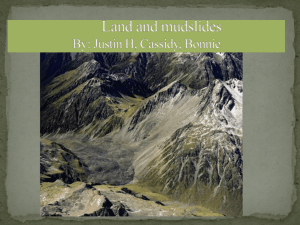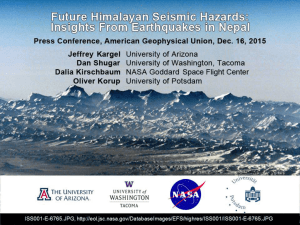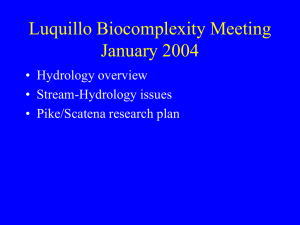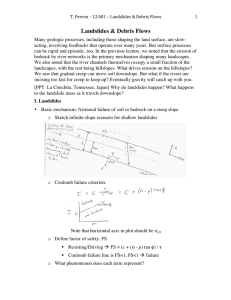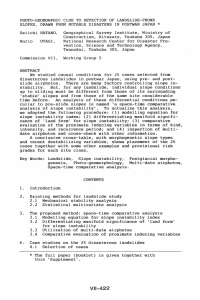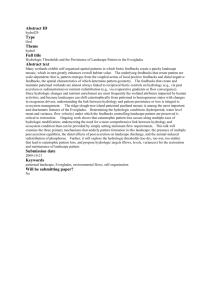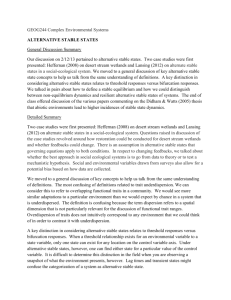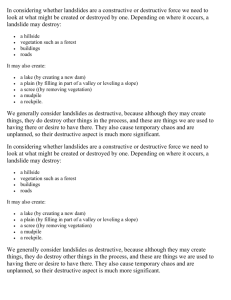Advances in modeling Land Dynamics in mountainous environments
advertisement
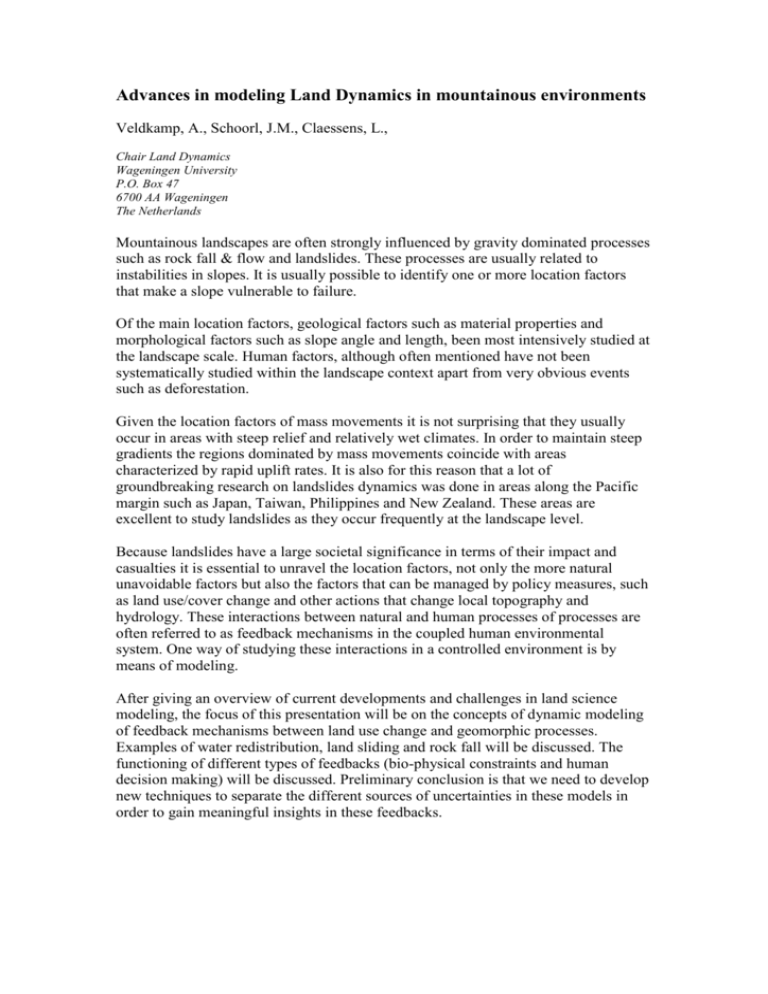
Advances in modeling Land Dynamics in mountainous environments Veldkamp, A., Schoorl, J.M., Claessens, L., Chair Land Dynamics Wageningen University P.O. Box 47 6700 AA Wageningen The Netherlands Mountainous landscapes are often strongly influenced by gravity dominated processes such as rock fall & flow and landslides. These processes are usually related to instabilities in slopes. It is usually possible to identify one or more location factors that make a slope vulnerable to failure. Of the main location factors, geological factors such as material properties and morphological factors such as slope angle and length, been most intensively studied at the landscape scale. Human factors, although often mentioned have not been systematically studied within the landscape context apart from very obvious events such as deforestation. Given the location factors of mass movements it is not surprising that they usually occur in areas with steep relief and relatively wet climates. In order to maintain steep gradients the regions dominated by mass movements coincide with areas characterized by rapid uplift rates. It is also for this reason that a lot of groundbreaking research on landslides dynamics was done in areas along the Pacific margin such as Japan, Taiwan, Philippines and New Zealand. These areas are excellent to study landslides as they occur frequently at the landscape level. Because landslides have a large societal significance in terms of their impact and casualties it is essential to unravel the location factors, not only the more natural unavoidable factors but also the factors that can be managed by policy measures, such as land use/cover change and other actions that change local topography and hydrology. These interactions between natural and human processes of processes are often referred to as feedback mechanisms in the coupled human environmental system. One way of studying these interactions in a controlled environment is by means of modeling. After giving an overview of current developments and challenges in land science modeling, the focus of this presentation will be on the concepts of dynamic modeling of feedback mechanisms between land use change and geomorphic processes. Examples of water redistribution, land sliding and rock fall will be discussed. The functioning of different types of feedbacks (bio-physical constraints and human decision making) will be discussed. Preliminary conclusion is that we need to develop new techniques to separate the different sources of uncertainties in these models in order to gain meaningful insights in these feedbacks.
